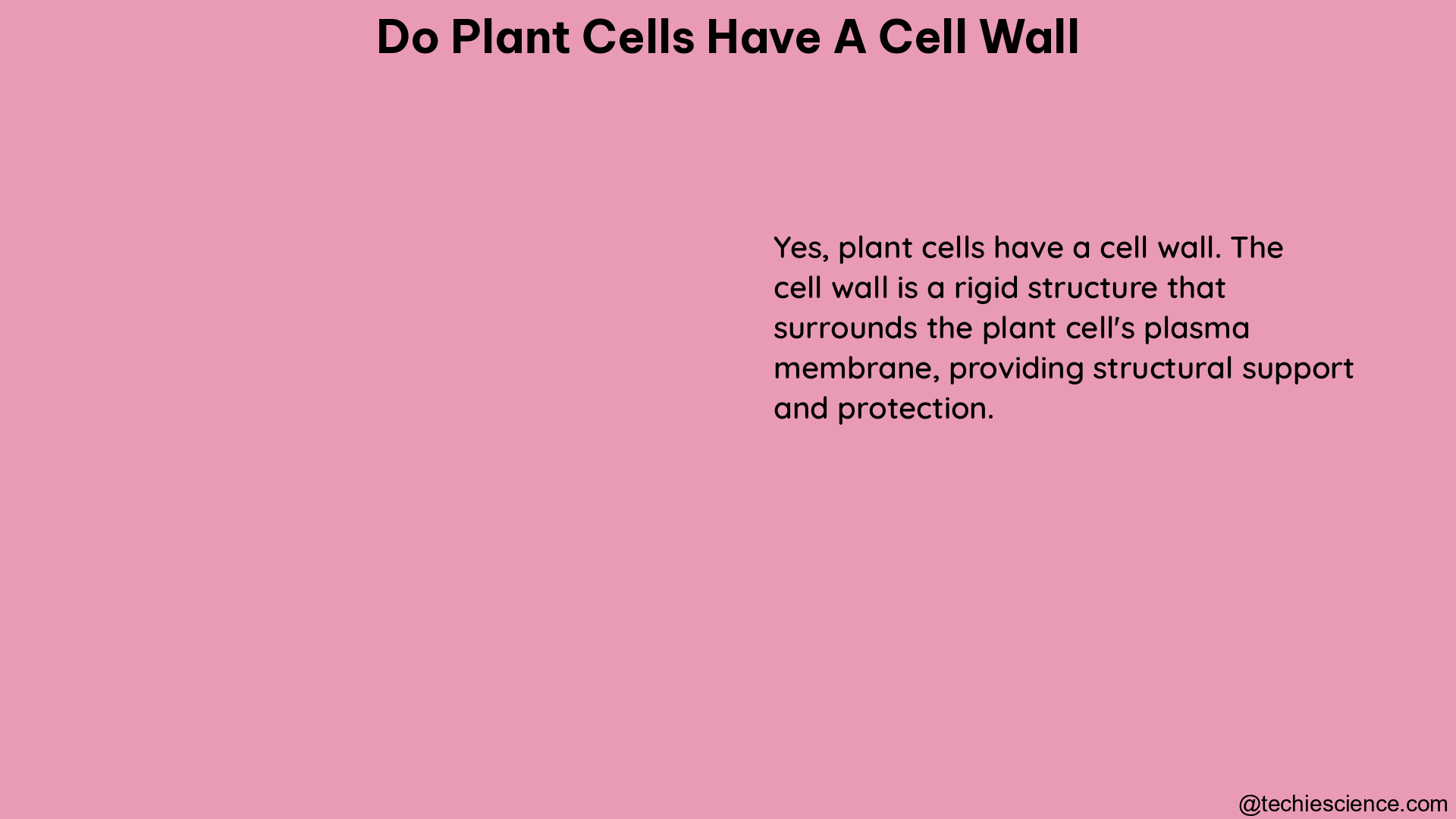Plant cells are unique in their structure and function, and one of the defining features of plant cells is the presence of a cell wall. The cell wall is a rigid, extracellular structure that surrounds the plasma membrane of plant cells, providing them with a range of essential functions. In this comprehensive blog post, we will delve into the details of plant cell walls, exploring their composition, mechanical properties, and the crucial roles they play in plant growth, development, and defense.
The Composition of Plant Cell Walls
Plant cell walls are primarily composed of three main polysaccharides: cellulose, hemicellulose, and pectin. These components work together to create a complex and dynamic structure that is both strong and flexible.
Cellulose
Cellulose is the most abundant component of plant cell walls, accounting for up to 50% of the dry weight. It is a long, linear polymer of β-1,4-linked glucose molecules, which form microfibrils that provide the primary structural support for the cell wall. These cellulose microfibrils are arranged in a parallel fashion, creating a strong, load-bearing network.
Hemicellulose
Hemicellulose is a diverse group of branched polysaccharides that interact with and crosslink the cellulose microfibrils, providing additional strength and rigidity to the cell wall. Hemicelluloses include xyloglucans, xylans, mannans, and glucomannans, and their specific composition varies among different plant species and cell types.
Pectin
Pectin is a complex polysaccharide that forms a gel-like matrix within the cell wall, providing flexibility and adhesion between cells. Pectin molecules are composed of α-1,4-linked galacturonic acid residues, which can be modified with various side chains and functional groups. Pectin plays a crucial role in cell-cell recognition, signaling, and the defense response of plants.
The Mechanical Properties of Plant Cell Walls

The mechanical properties of plant cell walls are crucial for their ability to withstand various stresses and support the growth and development of the plant. Researchers have employed various techniques to study the mechanical characteristics of cell walls, including tensile testing, microfluidics, and atomic force microscopy.
Tensile Strength
Tensile testing of plant cell walls has revealed that they can withstand significant tensile forces, with the strength varying depending on the plant species, cell type, and developmental stage. Cellulose microfibrils are the primary load-bearing components, while hemicellulose and pectin contribute to the overall strength and flexibility of the cell wall.
Extensibility
Plant cell walls exhibit a remarkable ability to expand and stretch during cell growth, without compromising their structural integrity. This is due to the dynamic rearrangement of the cellulose skeleton within the cell wall, facilitated by the action of enzymes and the interactions between the cell wall components.
Anisotropic Behavior
Plant cell walls exhibit anisotropic behavior, meaning their mechanical properties vary depending on the direction of the applied force. This is a result of the oriented arrangement of cellulose microfibrils, which provide greater strength and stiffness in the longitudinal direction compared to the transverse direction.
The Functional Roles of Plant Cell Walls
The cell wall is not just a passive structural component of plant cells; it plays a crucial role in various physiological processes, including growth, communication, and defense.
Structural Support and Protection
The cell wall provides structural support and protection to plant cells, shielding them from mechanical and osmotic stresses. This allows plant cells to maintain their shape and integrity, even under challenging environmental conditions.
Cell Expansion and Growth
The cell wall’s ability to expand and stretch is essential for plant growth and development. As the cell expands, the cell wall remodels and rearranges its components, allowing the cell to increase in size without compromising its structural integrity.
Cell-Cell Communication and Recognition
The cell wall is involved in cell-cell communication and recognition, facilitating the exchange of signals and information between neighboring cells. This is crucial for coordinating various physiological processes, such as development, defense, and response to environmental cues.
Defense Mechanisms
The cell wall acts as a physical barrier, protecting plant cells from pathogens and environmental stresses. Additionally, the cell wall can undergo modifications, such as the deposition of lignin or callose, to enhance its defensive capabilities.
Conclusion
In conclusion, plant cells have a unique and essential cell wall that is primarily composed of cellulose, hemicellulose, and pectin. This cell wall provides structural support, protection, and flexibility, enabling plant cells to grow, communicate, and defend themselves. The mechanical properties of the cell wall have been extensively studied, revealing its remarkable strength, extensibility, and anisotropic behavior. Understanding the composition and function of plant cell walls is crucial for advancing our knowledge of plant biology and developing innovative strategies for agriculture, biotechnology, and beyond.
References:
- AAT Bioquest. (2022-08-01). Do all cells have a cell wall? Retrieved from https://www.aatbio.com/resources/faq-frequently-asked-questions/do-all-cells-have-a-cell-wall
- Cosgrove, D. (2021-05-13). What makes plant cell walls both strong and extensible? Retrieved from https://science.psu.edu/news/Cosgrove5-2021
- NCBI. (2020). Cell wall dynamics: novel tools and research questions – PMC – NCBI. Retrieved from https://www.ncbi.nlm.nih.gov/pmc/articles/PMC10662238/
- Oxford Academic. (2009). Plant cell walls throughout evolution: towards a molecular understanding. Retrieved from https://academic.oup.com/jxb/article/60/13/3615/533649
- Nature. (n.d.). Plant Cells, Chloroplasts, Cell Walls | Learn Science at Scitable. Retrieved from https://www.nature.com/scitable/topicpage/plant-cells-chloroplasts-and-cell-walls-14053956/
Hey! I am Sneha Sah, I have completed post graduation in Biotechnology. Science has always been fascinating to me and writing is my passion. As an academic writer my aim is to make Science easy and simple to learn and read.